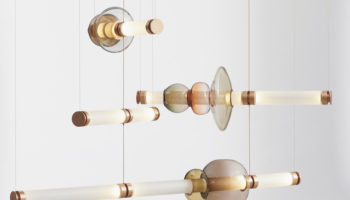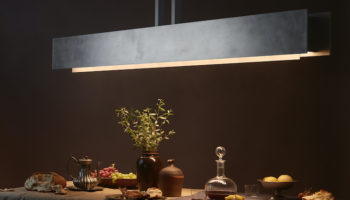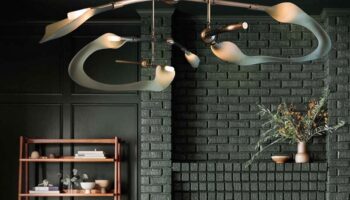The Future of Fluorescents
Ross Lovegrove’s System X has been variously called a “modern and sculptural lighting system”; an “x-shaped interconnected lighting module”; a “combination of industrial materialisation and polymerisation”; and, “Finally! A fluorescent lighting array that isn’t completely hideous.” Ah. The last quote should remind everyone of the prodigious derision heaped upon fluorescents like so many handfuls of miry muck. My favorite, in fact, comes from that early-90s paean to the redemption of the everyday shmo, Joe vs. the Volcano: “Not that anyone could look good under these zombie lights. I can feel them sucking the juice out of my eyeballs. Suck, suck, suck, SUCK…” So the much-maligned fluorescent is a straw man of sorts-an easy target. But still, I find myself wondering, why would anyone want to light anything with these? After all, as many have observed, “they need their own, extra large fixtures, they’re too noisy, they often flicker annoyingly, they’re oddly colored, and they often take several seconds to light.”
System X. Designed by Ross Lovegrove. Manufactured by Yamagiwa.
Au Contraire, for these are time-worn objections, and most of the impediments have been overcome (though the jury may still be out on safe disposal). And, as many utility companies would like you to know, for a given amount of light, fluorescents use only about one-fourth as much electricity as incandescent bulbs and produce only about one-fourth as much heat, leading to lower air conditioning bills-thus, the stereotype about dour-faced stingy boss types who insist on eerily flickering, life-draining, thinly-cylindrical fluorescent bulbs.

But back to the many-monikered System X. Lovegrove’s design for Japan’s Yamagiwa-a firm that prides itself on innovations in lighting (“a number of our professionals can provide interior and lighting design service to the high-end customers directly as a part of total designing business strategy”)-envisions fluorescents in a whole new, um, illumination. A modular concept that let’s you create your own scheme, System X’s basic unit is an x-shaped (actually, the thickened mid-section gives it more of a resemblance to a four-limbed starfish), flexible-polymer fluorescent. With the exception of the interlocking nubs at the ends of each appendage, the entire body of the unit illuminates, which creates a sort of eerily compelling interior phosphorescence-think the “light worm” from The Abyss, or the showiest of fireflies on an August night in Nashville or Savannah.
From an aesthetic perspective, System X stands in stark contrast to the tubular fluorescents of yore; the shape alone is innovation enough, not to mention the options created by their interconnectivity, which Yamagiwa sums as follows: “the product can be specified both for private and public use, beginning with small dimmable con-figurations for above the dining table or conference room to large open expanses that can create zones of differing temperatures of light in collective or singular modes.”
The product definitely has a futuresque feel to it. Arrangements of it in geometric or organically-inspired forms put me in mind of The Matrix or Star Trek‘s Holodeck–System X just might be the point of origin for a whole new way of comprehending interior lighting.




Leave a Reply